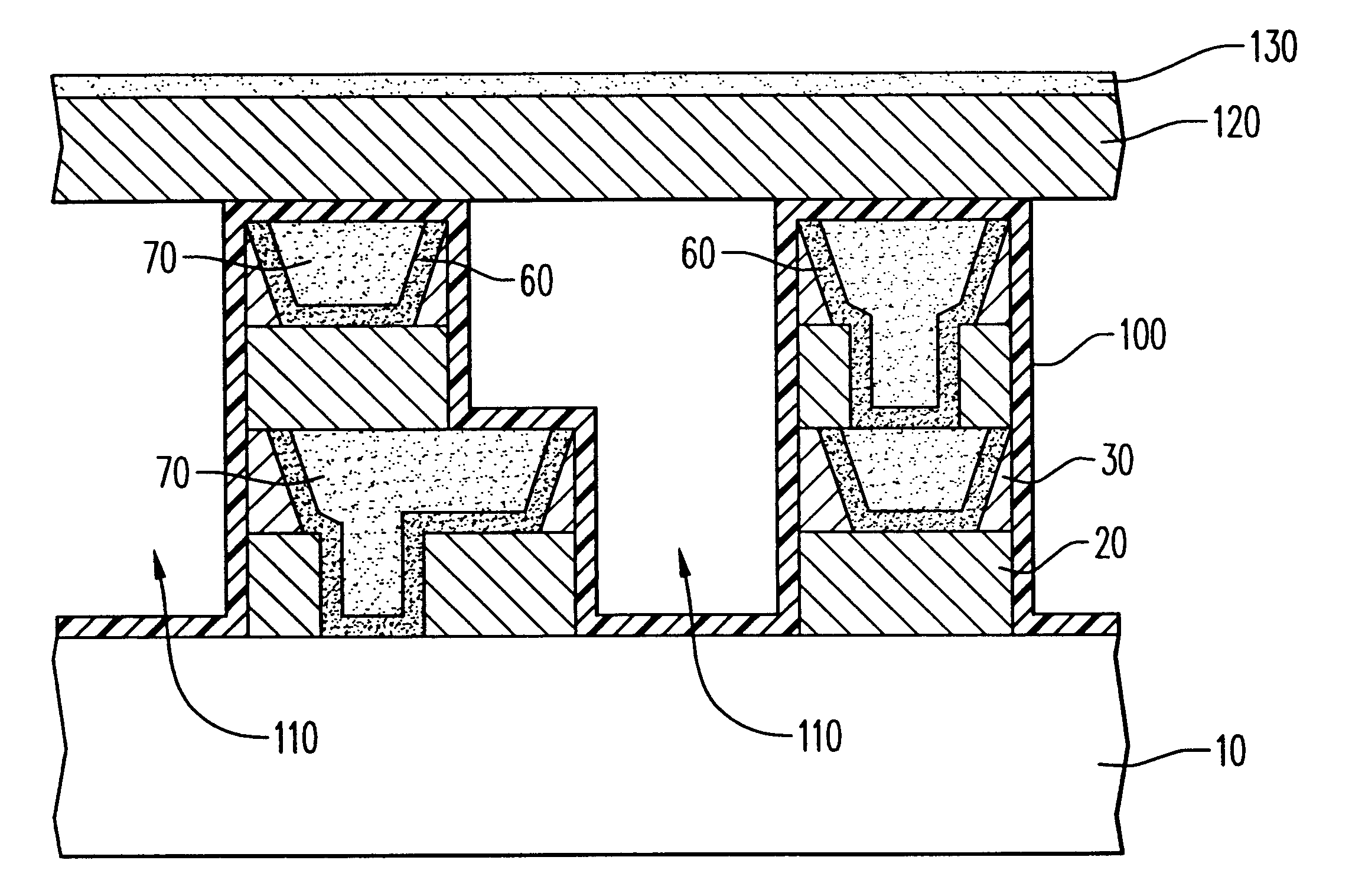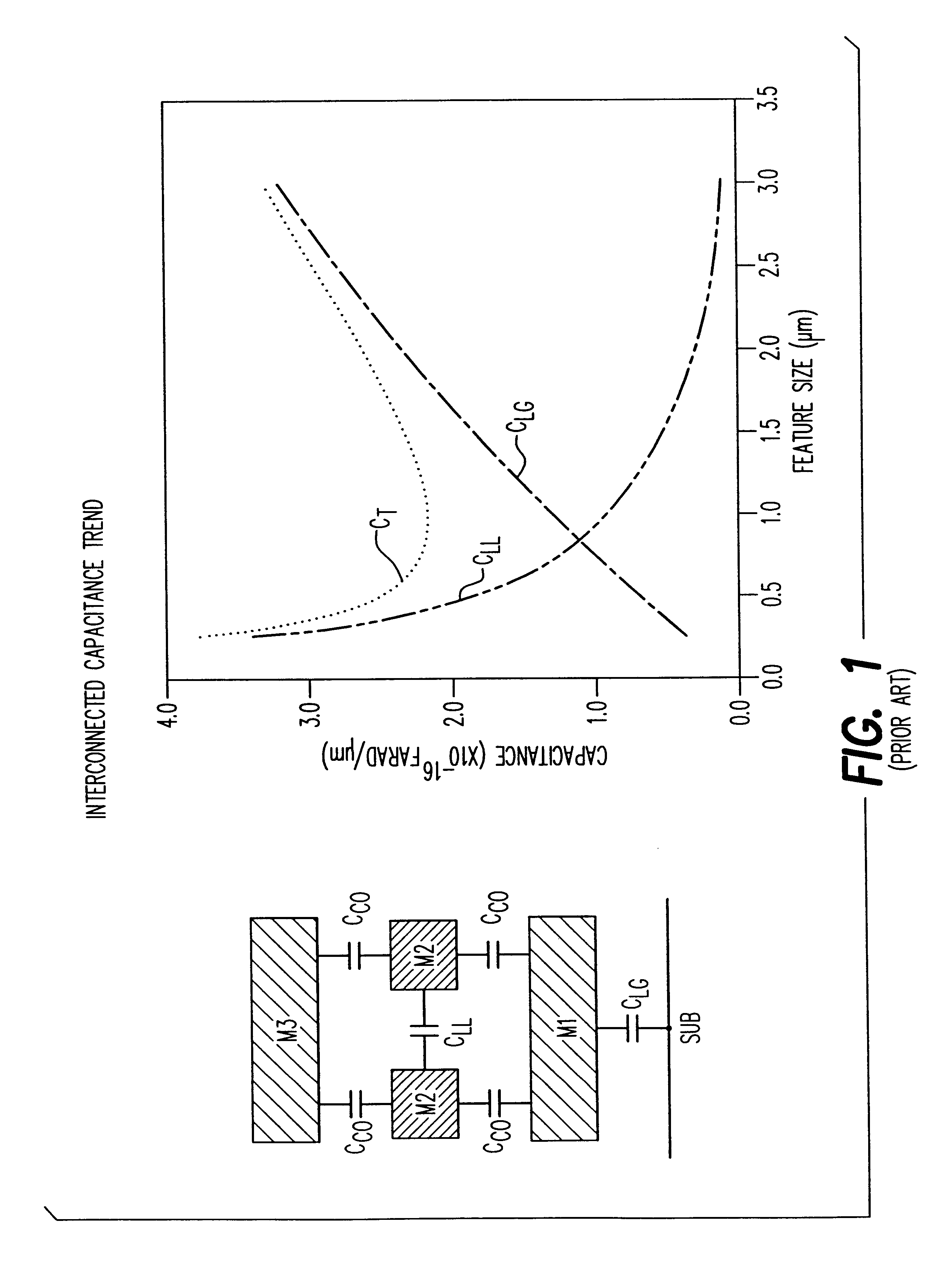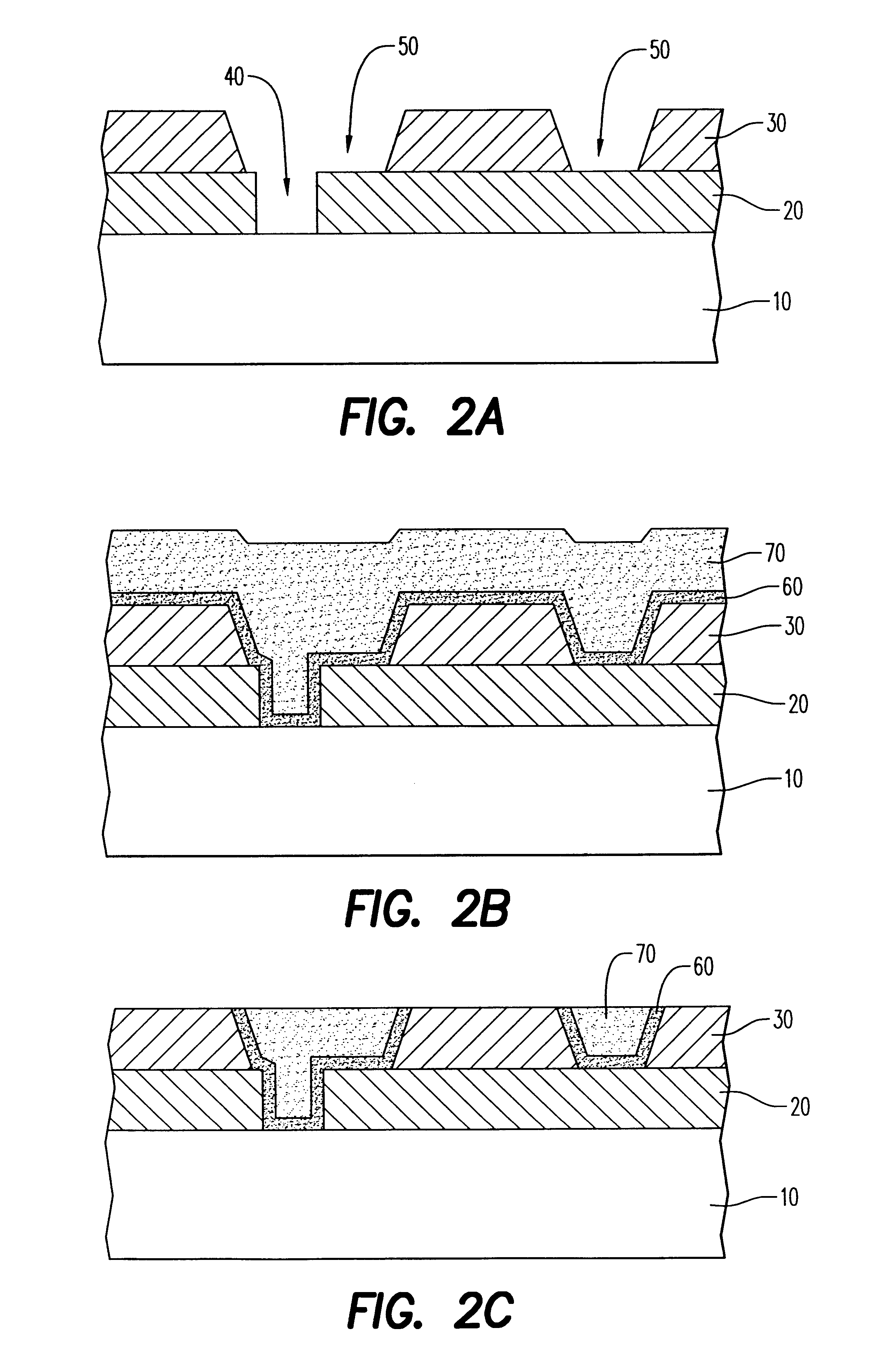Chip interconnect wiring structure with low dielectric constant insulator and methods for fabricating the same
a technology of low dielectric constant and wiring structure, which is applied in the direction of electrical equipment, semiconductor devices, semiconductor/solid-state device details, etc., can solve the problems of corrosion and adhesion loss, the physico-chemical properties of many of these low k materials are not optimum for the cmp process, and the practical difficulties of integrating low k dielectric materials in such a wiring structur
- Summary
- Abstract
- Description
- Claims
- Application Information
AI Technical Summary
Problems solved by technology
Method used
Image
Examples
first embodiment
The etch back approach proposed in the present invention was demonstrated by an experiment using a test wiring structure. This structure comprised an oxidized silicon substrate with a first wiring layer of copper, a second via level of copper and a third wiring level of copper connected to the first level at selected locations by means of said second copper vias. The insulator separating the different levels was Dupont Pyralin 2611 polyimide about 1.2 .mu.m thick. The line widths of the metal features ranged in size from 1 to 4 .mu.m, with spacings ranging from 0.65 to 3.75 .mu.m, and the metal thickness was about 1.2 .mu.m. There was a 100 nm layer of SiO.sub.2 deposited between the layers and on the third polyimide layer to act as CMP and RIE stop layer since these parts were fabricated by the damascene process described above in the
This structure was subjected to RIE to remove the dielectric layers from between the metal features. Typical RIE conditions employed for the polyimide...
example 2
An oxidized silicon wafer with two wiring levels interconnected at selected location by a via level was the starting point for this experiment. The structure consisted of Al--Cu alloy wiring and via studs and Ti-based or Ta-based adhesion and cap layers approximately 100 nm thick. The dielectric used was PECVD SiO.sub.2 and the build process used to make these substrates was one where the metal lines were fabricated by subtractive patterning followed by overcoating with the oxide dielectric material which was deposited by PECVD process. The features were typically 0.5 to 5 .mu.m in width and spacings in different locations of the wafer.
The wafer was subjected to RIE in CF.sub.4 or CHF.sub.3 / O.sub.2 plasma which was 80 to 95% fluorocarbon containing and in the pressure range of 10 to 30 mTorr, at an rf power density of 0.25 to 1 Watt / cm.sup.2. FIG. 6 is an SEM photograph of the structure after the completion of the etching process. It is evident that the oxide dielectric has been fu...
example 3
In an effort to demonstrate the etch back approach followed by conformal coating of a thin passivation dielectric proposed in the present invention, an experiment was performed using a test wiring structure. The structure was identical to the one described in Example 1 comprising wiring trace-via-wiring trace levels with polyimide dielectric between the metal features.
This structure was subjected to RIE to remove the dielectric layers from between the metal features. Typical RIE conditions employed for the polyimide removal were 10 to 30 mTorr of a CF.sub.4 / O.sub.2 gas mixture with 80 to 95% oxygen, at an rf power density of 0.25 to 1 Watt / cm.sup.2. The oxide RIE was carried out in a pure CF.sub.4 gas under similar conditions.
At this point, the wafer was loaded on a grounded substrate holder of a plasma enhanced chemical vapor deposition (PECVD) chamber, and coated with a 20 nm of silicon nitride using a process gas containing 2% silane in helium (30 sccm flow rate) and nitrogen (2...
PUM
 Login to View More
Login to View More Abstract
Description
Claims
Application Information
 Login to View More
Login to View More - R&D
- Intellectual Property
- Life Sciences
- Materials
- Tech Scout
- Unparalleled Data Quality
- Higher Quality Content
- 60% Fewer Hallucinations
Browse by: Latest US Patents, China's latest patents, Technical Efficacy Thesaurus, Application Domain, Technology Topic, Popular Technical Reports.
© 2025 PatSnap. All rights reserved.Legal|Privacy policy|Modern Slavery Act Transparency Statement|Sitemap|About US| Contact US: help@patsnap.com



